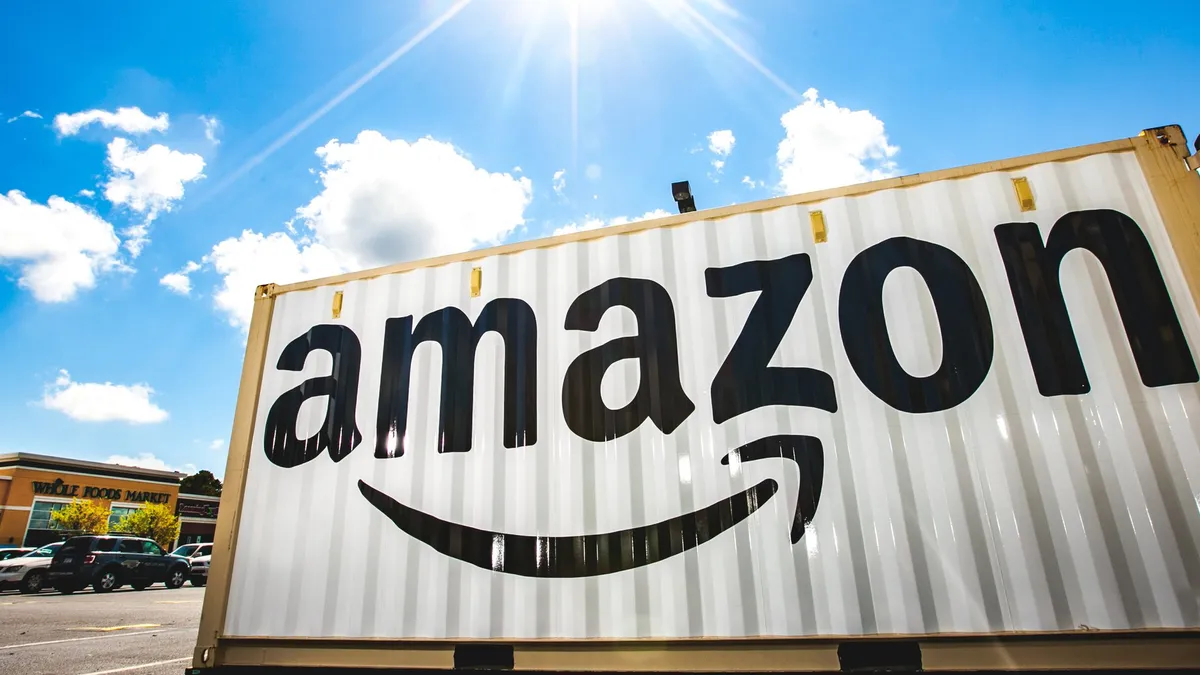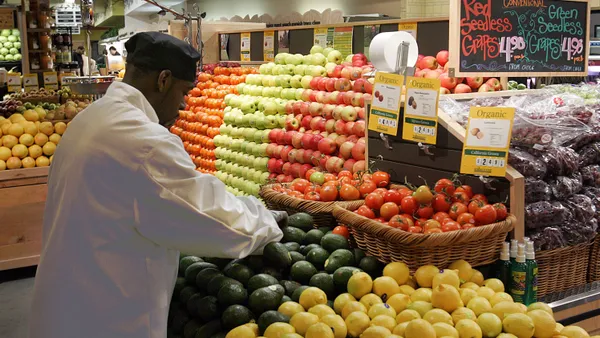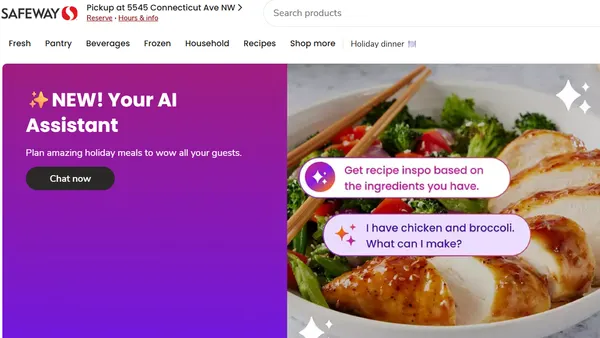Dive Brief:
- Although Amazon leads online grocery sales, supermarkets that offer e-commerce options are seeing bigger baskets and more frequent trips, according to consulting firm Brick Meets Click. Households surveyed by the firm that buy groceries from Amazon did so 1.6 times per month and spend an average of $46 per order, while those that use grocery pickup or delivery orders do so 1.9 times per month and spend an average of $105 per order. On a monthly basis, shoppers that use supermarket delivery and pickup services spend $200 compared to just $74 among Amazon grocery shoppers.
- This year saw fewer Amazon Prime members shopping for groceries at least once a month compared to last year, a survey by UBS found. The company’s Whole Foods acquisition was supposed to have the opposite effect, analysts noted.
- According to Brick Meets Click, online grocery sales will grow 15% next year to comprise a 6.3% share of total grocery dollars. Grocers that offer both delivery and store pickup should see an even greater uptick — between 25% and 30%, according to the firm.
Dive Insight:
Amazon, the lumbering giant that’s supposed to take over the supermarket industry, is struggling to become a legitimate grocery destination. Supermarkets should feel optimistic about their prospects, though don’t expect the retail conqueror to lag behind for long.
Most consumers see Amazon.com as a place to make fill-in purchases of bottled water, snacks and boxes of coffee pods. But the site is not generating anything resembling the full-basket shops that many supermarkets enjoy. According a story in The Wall Street Journal, the company is working with manufacturers to offer bigger pack sizes and cut down on the small, unprofitable orders that include many grocery items like snacks and beverages.
AmazonFresh, the online grocer that’s supposed to build those larger baskets, has struggled to grow in the more than ten years it’s been in business. Amazon pulled the service out of numerous markets last year and will likely modify and expand it in concert with its Whole Foods and Prime Now services. Having more than 450 Whole Foods stores and distribution centers across the country can help AmazonFresh expand rapidly alongside the grocers’ own on-demand service.
Whole Foods sales, meanwhile, have steadied as Amazon has integrated discounts through its Prime loyalty program. Amazon also has pushed for a more mainstream product selection that could net a wider range of shoppers. But retailers, including specialty operators that were supposed to get pummeled by a reinvigorated Whole Foods, report their sales haven’t been materially impacted. As the UBS report indicates, Amazon will have to do a lot more than lean on Prime if it hopes to boost traffic and sales at Whole Foods — and continue feeding its broader ecosystem.
Amazon’s struggles are a testament to the ways competing grocers have stepped up their online and in-store offerings. Last year, 69% of consumers had access to online grocery shopping, Brick Meets Click noted, while 90% are expected to have access by the end of 2018.
And those companies will need to continue to evolve. As the firm notes, online sales growth largely depends on retailers’ ability to offer a compelling shopping experience. Many retailers have reluctantly moved online in the frenzy following Amazon’s $13.7 billion Whole Foods buy, wanting to mainly focus on their bread and butter — their stores. But they need to put dollars behind marketing and executing their e-commerce services.
While there’s a concern that dollars will simply transfer from one channel to another, experts have noted digital engagement deepens customer loyalty and can increase sales in-stores and online. Yael Cosset, Kroger’s chief digital officer, recently noted that shoppers who use the company’s pickup and delivery services end up spending more with the company overall.
Although Amazon has struggled in online grocery, competitors are well aware it has the expertise, the capital and the patience to come roaring back. And even if it doesn’t, the heightened competition it spawned will keep grocers scrambling to stay ahead for the foreseeable future.










